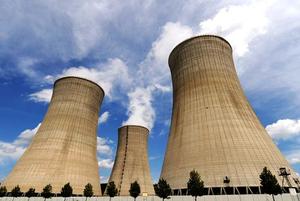EnergyCarbon-cutting regulations may boost prospects of nuclear power plants
In a report issued last Thursday, Standard & Poor’s Ratings Services (S&P) predicted that new nuclear plant construction could benefit from the Environmental Protection Agency’s (EPA) recent carbon-cutting guidelines for current natural gas power plants.

Nuclear power may get a boost // Source: llnl.gov
In a report issued last Thursday, Standard & Poor’s Ratings Services (S&P) predicted that new nuclear plant construction could benefit from the Environmental Protection Agency’s (EPA) recent carbon-cutting guidelines for current natural gas power plants.
As Platts reports, the EPA has proposed new regulations that “set a goal of reducing emissions of carbon dioxide 30% from 2005 levels by 2030.”
Analysts now predict that this will provide a needed boost to the nuclear power industry, in the face of fallout concerns in the wake of event such as the 2011 tsunami-related disaster at Japan’s Fukushima Daiichi plant.
Judith Waite, an analyst for S&P, said, “Although all options for cleaner power generation are on the table, it’s clear that nuclear power plants also offer an opportunity for the utilities to support long-term demand growth while avoiding increased carbon emissions.”
Additionally, the S&P report looks to the possibility that many well-publicized regional clashes over the growing time frames and budgets for nuclear power plants may fade from memory as the ability for the plants to meet the stricter guidelines further validates the cost. Currently, in some cases, with financial support from the U.S. Department of Energy (DOE), costs have run over budget by 7-10 percent. S&P, however, reports that many of these previous hurdles can be offset by historically low labor costs.
Newer plants, such as Georgia Power’s Vogtle Station, are efficient plants which are also not resting on their laurels via refinements to their existing structures. A new reactor design which is being developed uses natural phenomena such as convection and gravity to implement safety measures that otherwise would require more power.
These new advancements are expected to begin commercial operation in the last months of 2017, as the pros and cons of gas and nuclear power continue to be weighed.
